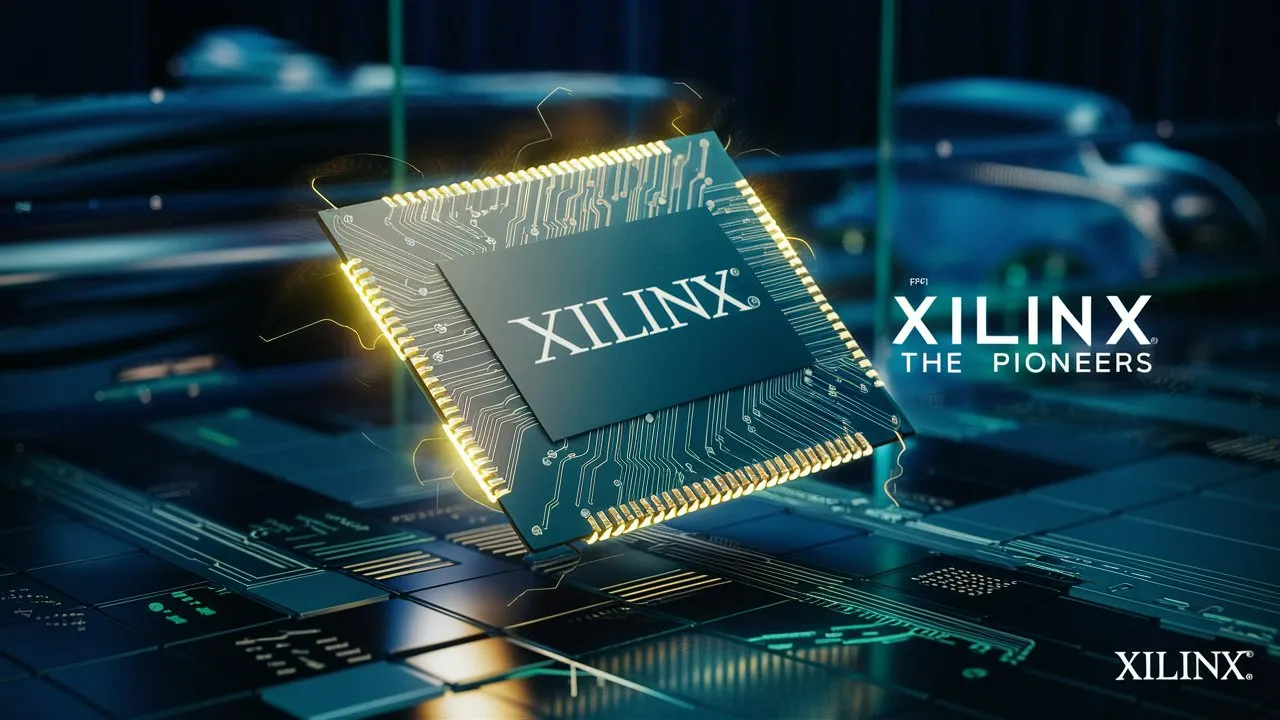
Xilinx was founded by Ross Freeman, Bernard Vonderschmitt, and James V Barnett II with a singular vision: to create a new class of devices that would allow users to customize hardware after manufacturing. This vision led to the development of the FPGA, a revolutionary product that provided unprecedented flexibility and power in electronic design.
Before FPGAs, designers were forced to rely on custom-built application-specific integrated circuits (ASICs), which were costly and time-consuming to produce. The introduction of FPGAs changed this landscape by enabling engineers to reprogram chips even after deployment, thus significantly reducing development cycles and costs. This innovation not only broadened the potential applications of semiconductor devices but also democratized access to advanced hardware design.
In addition to revolutionizing the semiconductor market with FPGAs, Xilinx also pioneered the fabless manufacturing model. This approach involves outsourcing the fabrication of semiconductor devices to specialized manufacturers, allowing companies like Xilinx to focus on design and development. By adopting this model, Xilinx set a new standard for efficiency and scalability in the semiconductor industry, one that has been widely adopted by other leading companies.
Xilinx’s innovative programmable logic devices have found applications across a vast array of industries, demonstrating the company’s versatility and technological prowess. Here are some key sectors where Xilinx’s FPGAs have made a significant impact:
Xilinx’s FPGAs are integral to modern industrial automation, providing the backbone for real-time processing, machine vision, and robotics. Their programmable nature allows for rapid updates and customization, which is essential in fast-evolving industrial environments.
In the telecommunications sector, Xilinx FPGAs are used in the development of networking equipment, enabling the high-speed data processing required for 5G networks and beyond. Their ability to handle complex signal processing tasks in real-time makes them ideal for use in base stations, routers, and other critical infrastructure.
Xilinx has long been a trusted partner in aerospace and defense, providing FPGAs that meet the rigorous demands of military applications. These devices are used in everything from radar and communications systems to unmanned vehicles, where reliability and performance are paramount.
In the consumer electronics market, Xilinx FPGAs are at the heart of many cutting-edge devices, enabling features such as high-definition video processing, gaming, and advanced user interfaces. Their adaptability ensures that they remain relevant in a market characterized by rapid technological change.
As the automotive industry moves toward greater automation and the adoption of electric vehicles, Xilinx’s FPGAs provide the processing power necessary for advanced driver-assistance systems (ADAS), in-car entertainment, and battery management systems. Their flexibility allows manufacturers to innovate quickly and keep pace with industry trends.
In 2020, Xilinx was acquired by AMD, marking a new chapter in its storied history. This acquisition has allowed Xilinx to further its reach and capabilities, leveraging AMD’s extensive resources and expertise in high-performance computing. As part of AMD, Xilinx continues to push the boundaries of what’s possible in semiconductor technology, developing solutions that meet the highest standards of performance and reliability.
The integration of Xilinx’s FPGAs with AMD’s CPUs and GPUs creates a powerful synergy, enabling the development of highly optimized systems for data centers, AI, and high-performance computing applications. This combination is particularly valuable in markets where power efficiency and compute density are critical, such as cloud computing and machine learning.
As we approach the final day of our series on leading electronic component manufacturers, we encourage you to stay tuned for tomorrow’s grand finale, where we’ll be highlighting @ZenkaEurope. Their contributions to the industry promise to be just as transformative as those we’ve explored so far. Be sure to follow @ZenkaEurope and check back tomorrow for the conclusion of our series!
Q: What is an FPGA?
A: An FPGA, or Field-Programmable Gate Array, is a type of semiconductor device that can be programmed after manufacturing. It allows for customized hardware configurations, making it versatile and adaptable for various applications.
Q: How did Xilinx revolutionize the semiconductor industry?
A: Xilinx revolutionized the semiconductor industry by inventing the FPGA, which allowed for post-manufacturing hardware customization. They also pioneered the fabless manufacturing model, enabling greater efficiency and scalability in the industry.
Q: What industries use Xilinx FPGAs?
A: Xilinx FPGAs are used in a wide range of industries, including industrial automation, telecommunications, aerospace and defense, consumer electronics, and automotive.
Q: How has Xilinx benefited from the AMD acquisition?
A: The acquisition by AMD has allowed Xilinx to expand its capabilities and reach, particularly in high-performance computing, AI, and data centers, by integrating its FPGAs with AMD’s CPUs and GPUs.
To know more, watch our video : https://www.youtube.com/shorts/oFo0YXJInB0